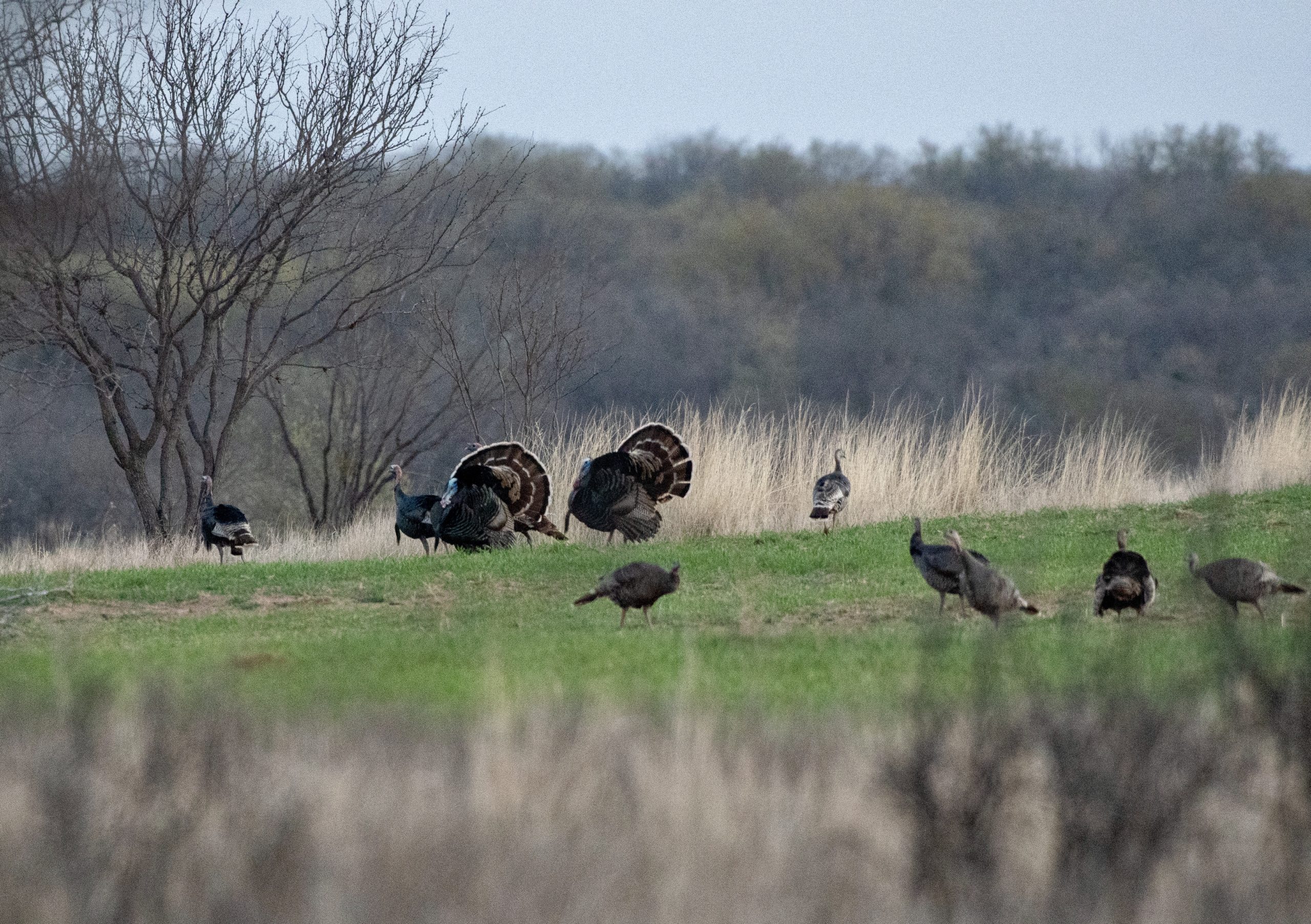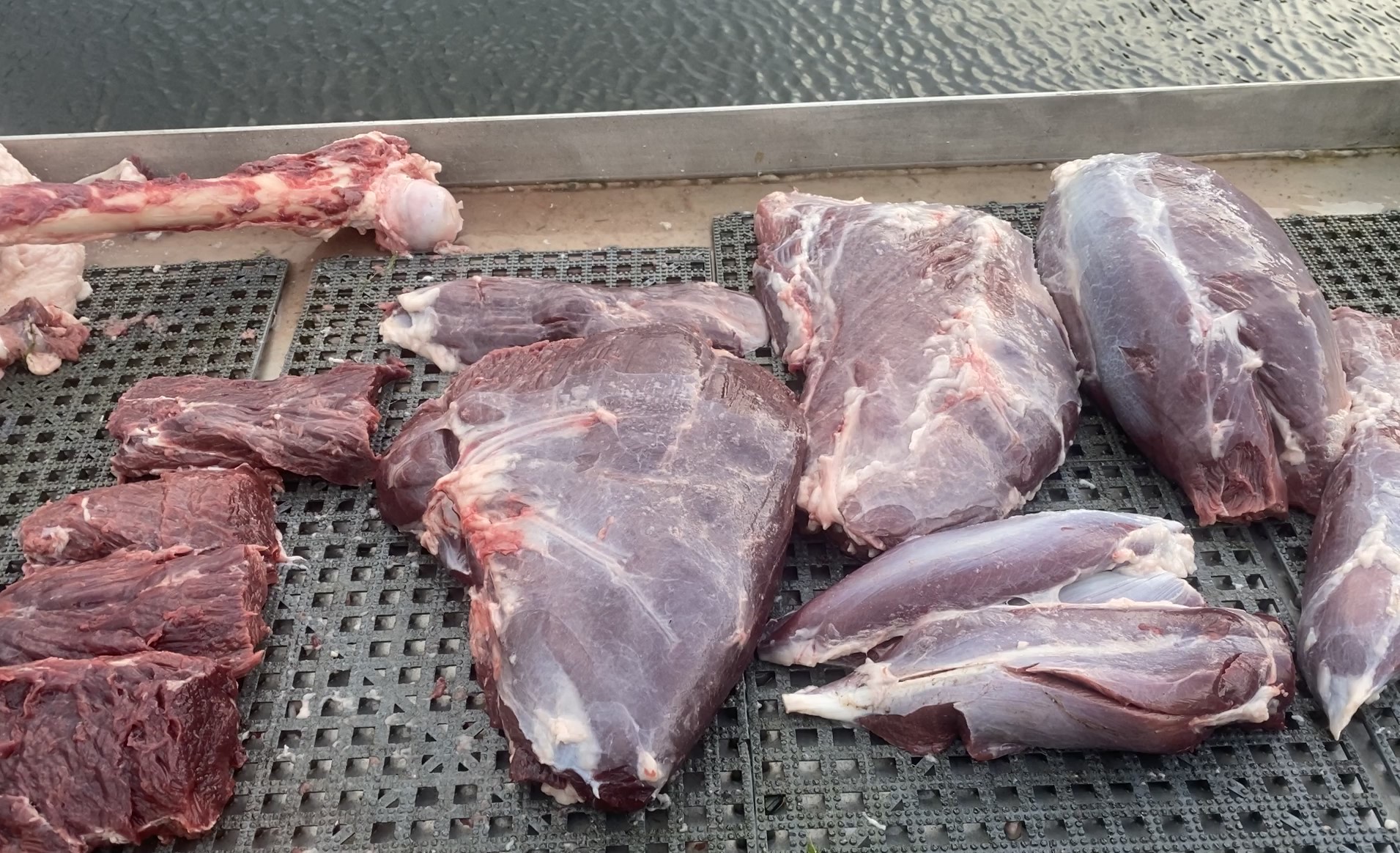My wife Sandy and I had the opportunity for the first time to host Greg and his son Eddie at our home here in Montana. We would have liked to have hosted Greg’s wife as well, but someone had to stay home to hold down the fort. While Greg and Eddie were here, we went to the range to make sure Greg’s rifle was still zeroed in for his hunt in Idaho. We came home, visited for a while then got to cooking some elk and wild hog using a simple brine definition to pull out some amazing flavors.
When looking for ways to make your wild game stand out from the rest, using a basic brine definition can get the job done. My favorite recipe these days is the basic Morton Tender Quick Brine. It is easy to prepare, simple, and works great with less tender cuts of game meat. The flavor profile opens up an endless array of recipes to try.
Last year when I butchered my elk, I froze a sirloin tip (aka football, check out our other recipes using this cut of meat as well as brine recipe and videos) and figured I better clean out my freezer before this year’s hunt. I cubed the muscle, brined, and then cooked in chicken broth. Chilled in the broth (to retain moisture and prevent evaporative cooling which allows all the moisture to escape resulting in a tough dry piece of meat) and was all ready for when Greg and Eddie arrived. We started the afternoon with brined cubed corned elk meat, cooked and cooled in broth. From there, we prepared three recipes from this meat.
Recipes From Brined Meats
The first recipe we prepared was the Elk Ham with Creamed Potato. Once prepared, we placed in the oven (of course Eddie filmed this entire process) then moved on to the Deviled Elk Ham recipe. This preparation took place on the kitchen counter in the food processor. Once we were satisfied with flavor and texture we made some deviled ham hors d oeuvres for sampling and flavor approval by Sandy our official taste tester. (we were starving by now). We then moved onto grilling a rack of wild hog that I had injected with a variation of the Kikkoman soy sauce brine recipe. We smoked and grilled the rack and served it with asparagus and roasted garlic mushroom barley pilaf.
By this point we were starting to get full, and as we finished the rack from the Rec Tec grill, out of the oven came the elk ham with creamed potatoes. No need to say we didn’t have apple pie for dessert. This was a special occasion with so many delicious options!
Brine Definition Vs. Cure and Marinade
The concept of this column is to emphasize that brining game meat changes the flavor profile opening an endless array of recipes. Brining also improves moisture retention and lengthens shelve life. Once you understand the brine definition and cooking process the options of cooking big game, gamebirds, and waterfowl are endless.
The definition of brining simply stated: is a salty marinade used to preserve meats, fish, vegetables, and cheeses, by immersion or injection. This process is also known as pickling. The main objective of a brine and cure is to preserve, inhibit and prevent growth of harmful microorganisms, lengthen shelf life, and increase or retain moisture.
The difference between a brine and cure is, a brine is wet and cure is usually dry. Although there are brines that contain cures such as curing salts which contain nitrites and nitrates when preserving and curing meats. Brines are flavored with sugars, herbs, and spices.
The main difference between a marinade and brine is that marinades are usually used to flavor and tenderize whereas brines are more food preservation oriented. There are always exceptions to these generalizations such as ceviche and marinara sauce, etc.
A Pickling liquid is basically the same as a salt brine and/or is vinegar based. So the terms brine, cure, corning, and pickle are usually interchangeable. Salts used for brining or pickling should be the purer forms such as kosher salt, sea salt, pickling salt, salts that have no additives to them, you don’t want to use table salts because of the additives. Always use stainless steel, calphalon, glass, plastic or sealed cookware such as porcelain, because they don’t react to the salt concentrations like aluminum or cast iron does.
Uses and Spices
Traditionally brining was reserved for tough, fatty, stringy, meats. The focus was food preservation of all the parts of the animal carcass. Some of the most popular are corned beef, pickled pig’s feet, corned duck, pickled tongue, and the list goes on. My wife Sandy’s favorite is caviar. When you think about all the foods that have been brined, pickled, cured, and marinated, the list would be endless. Here are a few examples, pickled ginger, eggs, onions, mushrooms, pig’s feet, herring, and more. Brined cheeses, hams, turkey, trout, and more, most items are brined before smoking.
The most common spices used when pickling are; allspice, bay leaf, peppercorns, mustard seeds, coriander, clove, ginger, and red chili flakes. A basic very simple brine used for soaking vegetables, fruits, and seafood to remove impurities and insects is 1 c salt to 1 g water. This brine works well for soaking shot up rabbits or game birds as well as for soaking liver or heart. For adding a cure to a brine, add 1 c salt and ¼ c curing salt per gallon of water. These simple brines are found in water injected hams and turkeys which are brined before you purchase. The brine not only keeps your product moist but you pay for that extra water.
Key Things To Consider
Here are some pointers when brining and/or pickling:
- Always wash the product after brining.
- Strain the brine before using injection needle.
- Inject 10-20% of green weight. Example. Meat weights 10 lbs before brining, inject 1-2 lbs
- Always brine in the refrigerator.
- Don’t re-use brines
- There are multiple tools available for injection, such as stitch pumps with multiple needles, or injection syringes with different gauge needles.
- Do not use iodized table salt, too many additives.
- Always combine dry spices with salts and/or sugars before using to prevent lumping.
- Always use a cure in the brine if meat is going to be smoked.
- Brines are used as a cure before smoking so make sure the item to be smoked is washed and dried before smoking.
- When deep frying a turkey you usually inject with a brine and/or marinade to retain moisture and add flavor.
- To shorten brining time try using a tumbler, which will infuse the brine in 20 minutes rather than 20 hours.
- Brining in a vacuum sealed bag will also reduce brining time by infusing the liquid much faster.
Remember to reference our other recipes using the brine definition, such as the football, smoked trout, and more. Check out our website recipes, blogs, and videos, using brines, cures, marinades, and rubs.





